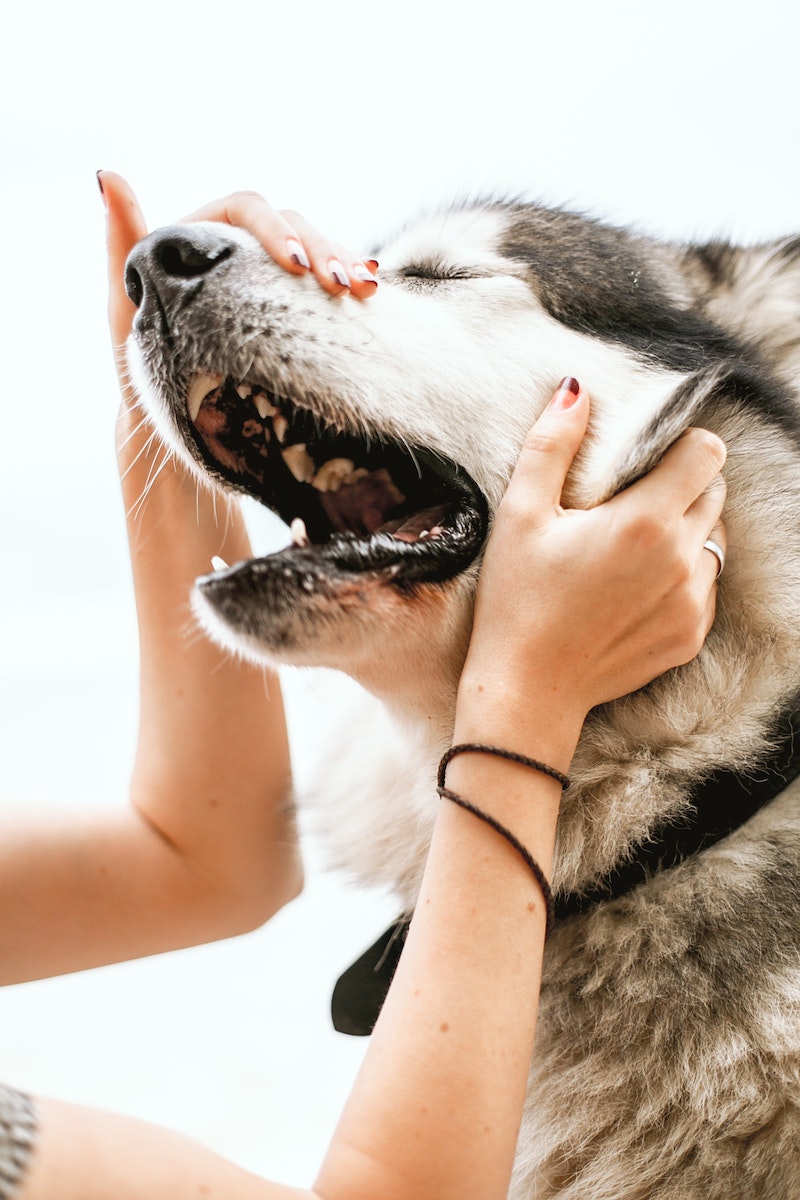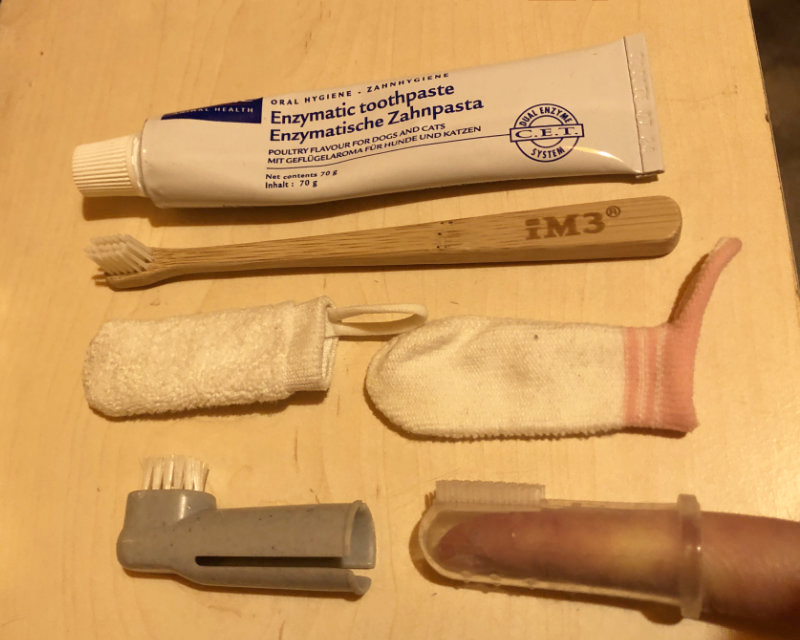Dental care for your dog
Healthy white teeth are something not only humans should strive for. Our dogs should sport a set of pearly whites as well, as dental hygiene has a major impact on a dog’s health and comfort in their everyday life.
So why do dogs need our help for their teeth to stay clean? After all, the dog’s ancestor, the wolf, doesn’t regularly visit the vet for a dental appointment, do they? The thing is, with the option of buying ready-made dog food at the store, dogs’ eating habits don’t compare to that of the wolf’s any more. The natural cleaning effect, that tearing off and chewing through raw meat and bones has, is largely gone. The good news is, with a bit of extra help all of your dog’s 42 teeth will be taken care of.
Why cleaning your dog's teeth is so important
With dental hygiene still not on every dog owner’s radar as something important, the majority of dogs older than three years have a dental problem of some kind or another. The key to not letting it come to that lies in detecting the first signs of deteriorating dental hygiene early on and doing something about it.

The beginnings of dental problems show themselves as yellowish colouring on the teeth, bright red and swollen, possibly bleeding gums, and excessive salivating without apparent cause. You should also be alerted if you notice your dog eating in an overly cautious manner, or if their breath is really bad. It doesn’t have to smell like a mint, but if it almost makes you pass out, that’s definitely a warning sign.
After a meal bits of food stay behind between the teeth of your dog, making it a breeding ground for bacteria. These bacteria coat the teeth in plaque, which will turn into tartar if it’s not removed in time. Good news is, plaque is quite soft so you can get rid of it by brushing your dog’s teeth or with the help of chew toys and bones. Tartar on the other hand, can only be removed by the vet, so it’s better not to let it get to that point. If left untreated, tartar and the excess of bacteria can lead to periodontitis, an inflammation of the gum that can cause the gum to recede, causing pain for your dog.
How to get those teeth shining
So what can you do to actively counteract the build-up of plaque and tartar? The most effective way is to regularly brush your dog’s teeth, but we’ll get to that in a minute.
To support the natural process of teeth cleaning you can give your dog toys and bones to chew on. There are chew toys on the market, whose material and texture are designed to help clear away plaque. It also massages the gums and strengthens the jaw. Additionally, more saliva is produced, which helps to flush out pieces of food remaining between their teeth. By the way, the same effect is obtained when your dog gets enough exercise as their panting produces saliva as well, so don’t underestimate the power of your daily walks.
Chewing bones and sticks have the added benefit of being a snack and a teeth cleaner at the same time. When buying them at the store, make sure that they are sugar-free, otherwise you’ll be dealing with caries. If you want to give your dog leftover bones from the kitchen, always go for uncooked ones and never for chicken or pork. When giving bones and chewing articles, you must always supervise your dog as they can choke on them. Some dogs are so greedy that they will swallow large chunks in one bite, which can be life-threatening.

While these chew toys and bones are a great asset in cleaning your dog’s teeth with relatively low effort on your part, they are not as thorough as the tried and tested toothbrush and toothpaste. It might sound silly at first but veterinarians and experts agree that it’s the most effective way of preventing dental problems in dogs.

Doggy teeth require doggy equipment, so opt for both toothbrush and toothpaste made specifically for dogs. For one, human toothbrushes have much harder bristles that can hurt your dog’s gums, plus regular toothpaste has ingredients that are toxic to dogs. Dog toothpaste also comes in spectacular flavours, such as peanut butter or chicken, to make your job a bit easier.
If your dog is not a fan of having a toothbrush in its mouth, there are also silicon toothbrushes available, that you can fit over your finger, allowing you to get to their teeth directly. Should this also prove too much, look for dental water additives that will help fight plaque and bacteria by putting it in your dog’s water bowl.
Reconciling dog and toothbrush
Brushing your dog’s teeth will require a lot of trust on both sides and is no easy feat with an adult dog that has never dealt with it before. You’ll definitely benefit from already teaching your puppy that nothing bad will happen if you go near their mouth and teeth. Start very slowly, with just touching their muzzle, before later on moving along the side of the teeth, first with just your finger. Once you feel that they’re comfortable with it, start introducing the toothbrush. You can also let your dog sniff and lick some toothpaste off your finger to get them used to the taste.
Once you feel that your dog is accepting of the whole experience, you can get both toothbrush and toothpaste ready. It is recommended to brush your dog’s teeth every day. Tartar builds up within three to four days so you should not leave too much time in between. If it is not possible on a daily basis, then a dental cleaning should take place at least once a week. While brushing, be gentle and patient, while making sure that you reach all around the outer side of your dog’s teeth. Focus on getting that side done, as this is where plaque builds up most. The inner side of the teeth is less susceptible as your dog automatically cleans it with their tongue. Reward your dog for a job well done afterwards and make brushing their teeth a fixture in your daily routine.
An annual check-up at the vet should also include a thorough examination of your dog's teeth so that timely action can be taken if problems arise.
Dental care is not to be underestimated when it comes to your dog’s health. This will not only make your dog's life more comfortable, but you may also be able to spare your dog a more serious dental treatment under anaesthetic at the vet. Regular brushing, a balanced diet, and a good amount of exercise all add up to a set of healthy, gleaming teeth, and consequently, a happy dog.